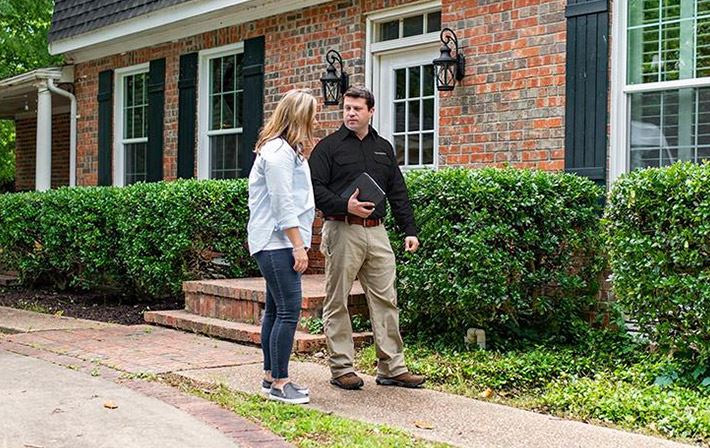
Ant Identification & Prevention
What are ants?
Ants are social insects that live together in huge colonies. Ants are common household pests that use their small bodies to get into the smallest holes and gaps in your property. From there, they search incessantly for access to food. Ant bodies are composed of three distinct sections: the head, the thorax, and the abdomen. Ants also have a pair of bent antennae on their heads. When mating season arrives, reproductive ants will sprout wings and perform a mating flight, before flying off to form colonies of their own.
Two common ant species to watch out for are Odorous house ants and Carpenter ants.
Odorous house ants - Small and dark brown or black in color, odorous house ants are more commonly recognized by smell than by sight; that’s because these ants emit a foul odor that smells like rotten coconuts when crushed. Watch your step!
Carpenter ants - These large, wood-destroying ants range in color from black or brown to red, or a combination of those colors. Unlike other destructive pests like termites, carpenter ants don't actually eat wood; instead they tunnel through wood to create galleries inside, resulting in damages to the wood of your home that can be costly to repair.
Are ants dangerous?
Certain ants, such as fire ants, can be dangerous if several swarm and bite you. Others, such as carpenter ants, present a threat to properties in the form of structural damage. Most ant species are nuisance ants and pose no significant risks to people or properties; however, they can still be a hazard if they make their way into sealed food containers.
Why do I have a ants problem?
Ants can invade any time of year, but they’re always looking for the same things: food and water. Once they find it, they’ll leave a pheromone trail that other ants can follow back and forth between the food or water source and the colony. A few straggling ants can quickly become a superhighway as they move between their food sources and their colony.
Certain factors can also attract ants. Watch out for excess moisture buildup from clogged gutters, leaky outdoor fixtures, unsecured garbage, wood piles, animal feed, and compost piles. Once they’re in proximity to your home, ants usually get inside through cracks and crevices in the foundation or exterior walls; however, they can also get in through torn window screens, open vents, roofline holes, and practically any other method you can imagine.

Why Choose Termishield?
-
Customer Care Focused
-
Free Inspections
-
Honest & Transparent
-
Over 25 Years of Experience
Where will I find ants?
When ants infest a home, they can end up in a variety of places that provide them with easy access to their favored sources of food, water, and shelter.
Inside, ants are commonly found in the following locations:
- In kitchens and pantries.
- Around air conditioning units.
- Behind walls.
- Underneath floorboards.
- Behind or inside large appliances.
- Inside insulation or in crawlspaces.
- Near heating and plumbing systems.

How do I get rid of ants?
Ants are small, versatile, and determined. Due to their size, they can access almost any space or container with ease. As their numbers grow, it can become an overwhelming task to try to eliminate the problem. Don’t leave your home under attack from ants. To control and prevent ant infestations, partner with an experienced local pest professional. Termishield service technicians provide outstanding pest control solutions to eliminate your current pest problems and prevent future ones from becoming an issue.
Termishield technicians utilize modern and effective pest control strategies to target ant infestations at the source and thoroughly eliminate them. If you’re tired of ants in your home or business, reach out to Termishield Termite & Pest Protection to schedule pest control services today!

Hear From Our Happy Customers
At Termishield, your satisfaction is our priority! See for yourself what our customers have to say about working with us.
-
“They go above and beyond every time.”- Danielle S.
-
“Nathan was very helpful and professional.”- Kathy M.
-
“They got me on the schedule quickly for a wasp nest removal.”- Kathleen M.
Termishield's Blog
Want all the latest news or updates? Browse through our blog to read our most recent posts and featured articles.


